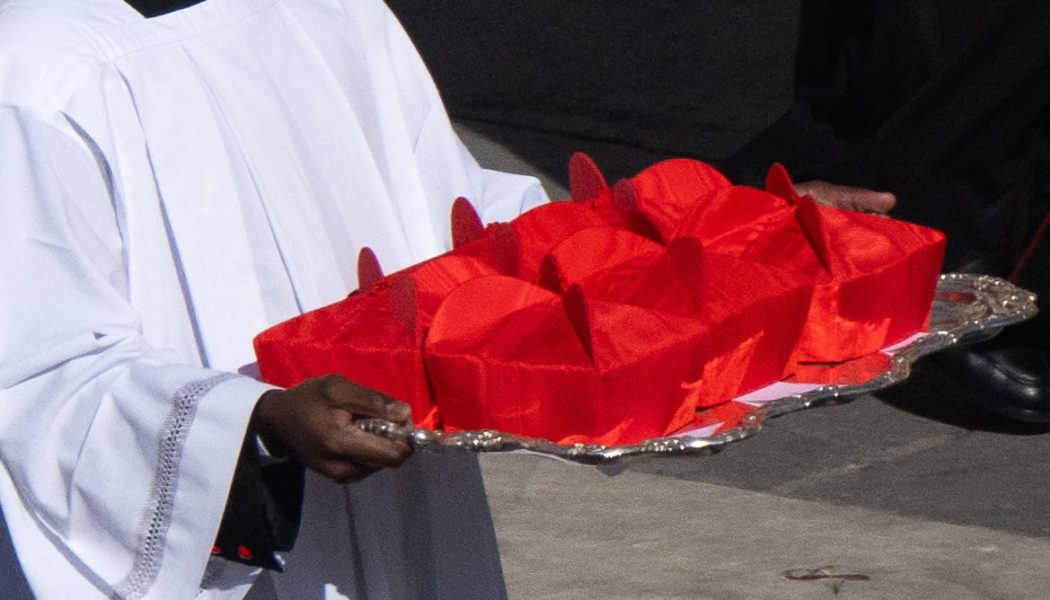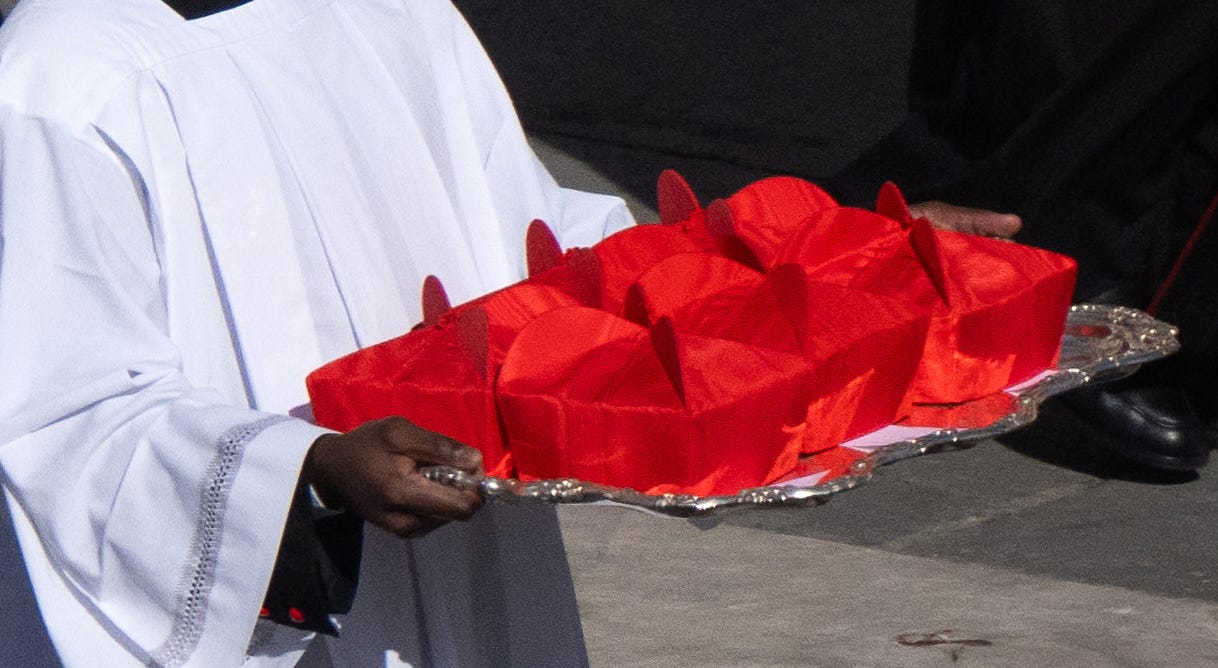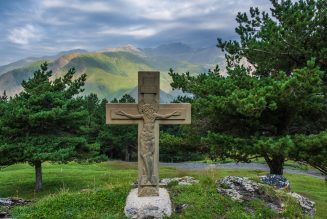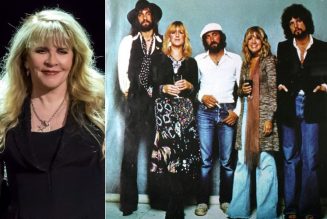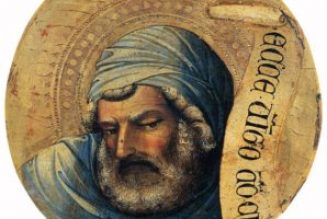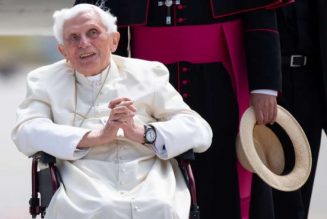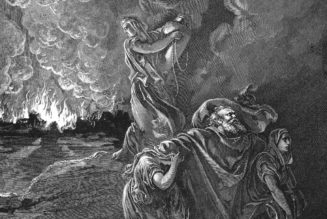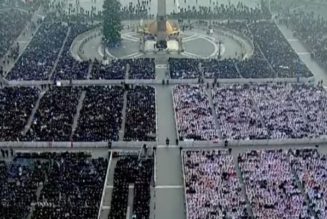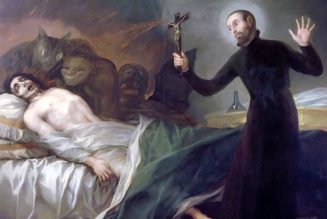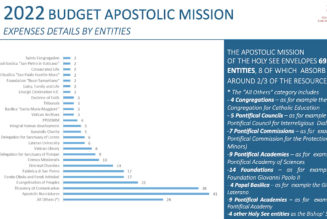As the traditionally quiet month of August continues in Rome, Pope Francis is gearing up for a slate of international trips next month, setting off September 2 for a 10-day tour of Asia and Oceania before returning to Europe for a swing through Belgium and Luxembourg.
But September is also a traditional month for popes, including Francis, to convene consistories of the college of cardinals and appoint new members.
Last year, Francis created new cardinals in a consistory meeting scheduled just before the opening of October’s sessions of the synod on synodality, due for its final chapter this autumn. Just over a year ago, the pope announced 18 new voting age members to the body that will eventually elect his successor.
But the passage of time means that since he last announced a transfusion of new cardinalatial blood, 15 members of the college have turned 80 years old and aged out of the conclave, with 12 more set to do so by this time next year.
So will the pope top up the numbers? And if so, where might they be from?
—
Currently, there are 124 voting age cardinals, set to fall to 112 in the next 12 months.
Universi Dominici Gregis, the apostolic constitution governing papal elections, sets the maximum number of voting cardinals at 120. However, as that document is merely ecclesiastical law (as opposed to divine law), popes are free to dispense from its norms at will, meaning the total number of voting age cardinals, and the schedule on which they are created, is practically a matter of personal papal discretion.
Customarily, popes tend to treat the 120 voting cardinal limit as a minimum rather than maximum number, dispensing from the upper limit and appointing cardinals in batches in advance to replace a cohort about to age out.
If Francis doesn’t call a consistory to appoint a new slate by the end of next year, the Church would begin 2026 with only 106 voting cardinals.
The new space opening up in the college’s electoral ranks also presents Pope Francis with a window to further redress the geographic balance of a future conclave, with more than a third of the retirees coming from Europe — which still has the largest block of cardinals, despite declining numbers of Catholics.
Of the 32 cardinals who have either already turned 80 or will by the end of next year, 12 will be Europeans, seven from Africa, six each from Latin America and Asia, and two from North America.
At the time Francis was elected pope, more than half of the conclave was made up of European cardinals. Following his slate of 2023 appointments, that dropped to 42%. Retirements since then have moved that up to 43%, but without any new papal appointments, Europeans would only make up 41% of a 2026 conclave — the lowest since conclaves were brought into the papal election process.
Depending on whether the pope elects to top up the European numbers, the college could see a significant boost in the relative representation of Latin America, Africa, and Asia.
Of course, Francis is well known for picking his cardinals according to personal preference, and not necessarily adhering to the tradition of handing red hats to the leaders of historically important archdioceses.
That being said, European bishops who might ordinarily be thought up for consideration would include Archbishop Laurent Ulrich of Paris, Archbishop Mario Delpini of Milan, Archbishop Leo Cushley of Edinburgh and St. Andrews, and Archbishop Eamon Martin of Armah (Primate of All Ireland) — though most Francis watchers have by now concluded the pope would have made them cardinals already if he was ever planning to do so.
A more likely pick from the current European crop of archbishops would be Mechelen–Brussels’ Archbishop Luc Terlinden, with the Belgian primatial see due a papal visit soon.
Another potential Francis pick could be Napoli’s Archbishop Domenico “Mimmo” Battaglia, who at 61 is still something of a rising star in the Italian Church, with Francis occasionally known to cite prayers written by the bishop and praise his strong anti-mafia stance.
Closer to home, the pope’s vicar for the Diocese of Rome is customarily made a cardinal. The current incumbent, Archbishop Baldassare Reina, succeeded Cardinal Angelo De Donatis last year.
De Donatis is still only 70, so it would be unusual to give his successor a red hat while he is still of voting age — but then there was nothing usual about his departure from office after Francis’ very public loss of confidence in his vicar.
Giving Reina a red hat might just be the kind of unorthodox move the pope appreciates, signaling a total turning of the page.
—
Seven of the cardinals who will have aged out of the conclave by the end of next year are former curial officials who, while moderately skewing towards Europe, and Italy in particular, also include notable non-Europeans like Cardinal Robert Sarah.
Francis’ 2023 round of cardinal appointments promoted those Vatican prefects who weren’t yet cardinals, but some long-serving senior staff might have an outside chance of making a future list — perhaps along with a move to a new role where necessary.
Archbishop Paul Gallagher, the pope’s foreign minister and chief diplomat, has given worthy service over Francis’ decade in office, often having to deal with the messy aspects of papal diplomatic priorities — not least the Vatican-China deal and relations with Russia following the invasion of Ukraine.
Archbishop Rino Fisichella, pro-prefect for the New Evangelization, has also managed to hold on to a key brief for more than 10 years, including after the reconstitution of the curia in 2022 with the promulgation of Praedicate evangelium.
A perennial candidate for a red hat is also Archbishop Ilson de Jesus Montanari, who has served as secretary at the Dicastery for Bishops since 2013, secretary of the College of Cardinals since 2014, and vice camerlengo of the Roman Church since 2020.
Montanari is widely known to have a close relationship with Pope Francis, and was reportedly the pope’s preferred candidate to become prefect of the Dicastery for Bishops after the retirement of Cardinal Marc Ouellet, an appointment he reportedly declined more than once.
Instead, he’s said to harbor a preference to return to his native Brazil to lead a diocese where there are currently nine vacant sees. While none of the current vacancies traditionally rate a cardinal bishop, that is not a custom Pope Francis has shown himself to be especially concerned with in the past.
—
In addition to the already mentioned Cardinal Sarah, six other African cardinals will have aged out of the conclave by the end of next year.
Cardinal Jean-Pierre Kutwa of the Ivory Coast’s Archdiocese of Abidjan retired from office earlier this year at the age of 78. His successor, Archbishop Ignace Bessi Dogbo, could be a possible future cardinal.
Similarly, Archbishop Philip Anyolo of Nairobi, president of the Kenyan bishops’ conference, is a likely prospect to follow his predecessor, Cardinal John Njue, who will turn 80 on New Year’s Day 2025, into the college. As could Archbishop Jude Thadaeus Ruwa’ichi of Dar-es-Saalam, whose predecessor, Cardinal Pengo, has already turned 80.
Another African archbishop worth considering in the cardinals’ sweepstakes would be Nigeria’s Archbishop Ignatius Ayau Kaigama of Abuja. Appointed to lead the archdiocese by Pope Francis in 2019, he has been an outspoken advocate for the local Church as it suffers through the most violent ongoing persecution in the world.
Kaigama’s predecessor, Cardinal John Onaiyekan, turned 80 earlier this year.
—
Another prospect for cardinal could be Vietnam’s Archbishop Joseph Vũ Văn Thiên of Hanoi.
Francis named his predecessor, Pierre Nguyễn Văn Nhơn, a cardinal in 2014 (he is now 86) and since then the Vatican has gone on to agree to a historic diplomatic rapprochement with the Vietnamese government — often cited as a template for the Holy See’s engagement with China.
And speaking of China, while appointing a cardinal from the mainland would be a historic move by Pope Francis, the possibility can’t be totally excluded.
The run of events with the mainland bishops has been bumpy — to say the least — with the Communist Party moving to appoint and transfer several bishops without prior papal approval, and continuing to depose, harass, arrest and disappear those who refuse to acknowledge party supremacy in ecclesiastical affairs.
Since the Vatican’s agreement with Beijing was last renewed two years ago, the government has even moved to create its own diocese, and strong-armed a bishop into giving up his see to serve as an auxiliary there.
If Francis were minded to make history by creating a cardinal from the mainland for the first time since 1969, the most prominent and least likely candidate would probably be Bishop Joseph Shen Bin of Shanghai, who leads the CCP-sponsored (but unsanctioned by Rome) Bishops’ Conference of the Catholic Church in China.
A more interesting possibility — though still a very remote one — would be if Francis elevated one of the two bishop delegates to last year’s sessions of the synod on synodality.
Bishop Anthony Yao Shun and Bishop Joseph Yang Yongqiang came to Rome for last October’s synodal sessions, drawing attention both with their arrival and their early departure after only 12 days.
Another possible contender for the rank of cardinal could come from down under, where Australia has been without a red hat since the death of Cardinal George Pell — a lack of representation keenly felt in the local Church.
Likely frontrunners there would be Pell’s popular successor as Archbishop of Sydney, Anthony Fisher, OP, or alternatively the Archbishop of Perth, Timothy Costelloe, described to The Pillar by one Australian Church watcher as “a very synodal man.”
—
Of course, any discussion of possible future cardinals inevitably includes some mention of especially far-fetched candidates, with commentators often hyping speculation over some dramatic or polarizing possibility.
In the past, many American outlets have defaulted to talking up the very outside chances of Fr. James Martin SJ, the New York Jesuit, LGBT advocate, occasional papal correspondent, and secular media darling; though he’s rather less well-known in Rome.
But after staging a blessing of a same-sex couple for the New York Times late last year, and going against the norms of the Dicastery for the Doctrine of the Faith’s recently published declaration Fiducia supplicans in the process, even the longest odds would be unlikely to attract many bets on a future Cardinal Martin these days.
A more knowing “insiders’ pick” for a surprise papal nomination now would probably be Fr. Timothy Radcliffe, OP.
No less outspoken on pastoral issues than Martin, though rather less of a “personality brand,” the former master of the Dominican order is known to be a favorite of Francis, and was asked by the pope to lead a three-day retreat for all synodal participants last October.
At 78, Radcliffe wouldn’t be a voting cardinal for very long, but promoting him to the college as a kind of honorific would also fit a tradition of popes naming so-called “remedial” cardinals — those once pushed for higher office but not actually appointed.
In Radcliffe’s case, he was strongly recommended for a diocese by the previous Archbishop of Westminster, Cardinal Cormac Murphy-O’Conner, but never made a bishop by Pope Benedict XVI.
Comments 18
Services Marketplace – Listings, Bookings & Reviews
